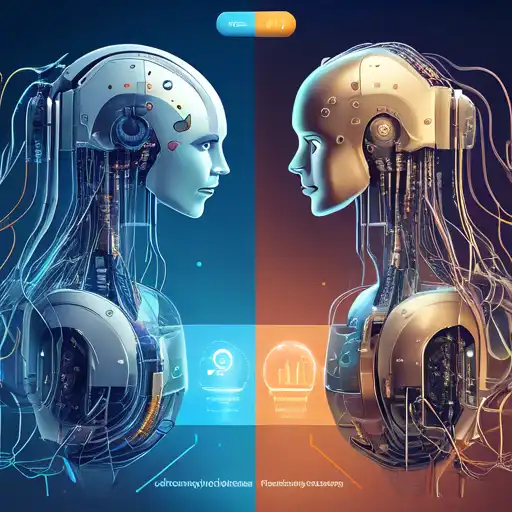Introduction to Machine Learning and Deep Learning
In the realm of artificial intelligence (AI), Machine Learning (ML) and Deep Learning (DL) are two pivotal technologies that have revolutionized how machines interpret data. While they are often used interchangeably, understanding their differences is crucial for leveraging their potential effectively.
What is Machine Learning?
Machine Learning is a subset of AI that enables systems to learn and improve from experience without being explicitly programmed. It focuses on the development of algorithms that can process data, learn from it, and make informed decisions based on that learning.
Key Features of Machine Learning
- Requires structured data
- Dependent on human intervention for feature extraction
- Uses algorithms like decision trees, SVM, and linear regression
What is Deep Learning?
Deep Learning, a subset of ML, mimics the workings of the human brain in processing data for decision making. It uses neural networks with several layers (hence 'deep') to learn from large amounts of data.
Key Features of Deep Learning
- Can work with unstructured data
- Automatically extracts features without human intervention
- Uses complex neural networks for processing
Machine Learning vs. Deep Learning: The Key Differences
While both ML and DL aim to teach machines to learn from data, their approaches and capabilities differ significantly.
Data Dependency
ML algorithms perform well with smaller datasets, whereas DL requires large amounts of data to understand and learn from it effectively.
Feature Extraction
In ML, feature extraction is manual and requires domain expertise. DL, however, automates this process, making it more efficient for complex tasks like image and speech recognition.
Computational Power
DL models are computationally intensive, requiring high-performance GPUs, while ML models can run on lower-end systems.
Interpretability
ML models are easier to interpret and explain, making them preferable for applications where transparency is crucial. DL models, with their complex architectures, are often seen as 'black boxes'.
Choosing Between Machine Learning and Deep Learning
The choice between ML and DL depends on the specific requirements of your project, including the size of your dataset, the complexity of the task, and the computational resources available.
When to Use Machine Learning
- For smaller datasets
- When interpretability is important
- For tasks that don't require processing unstructured data
When to Use Deep Learning
- For large datasets
- When dealing with unstructured data like images, audio, or text
- For tasks requiring high accuracy, such as autonomous driving
Conclusion
Understanding the differences between Machine Learning and Deep Learning is essential for selecting the right approach for your AI projects. While ML offers simplicity and interpretability, DL provides unparalleled accuracy for complex tasks. By considering your project's specific needs, you can harness the power of these technologies to drive innovation and efficiency.
